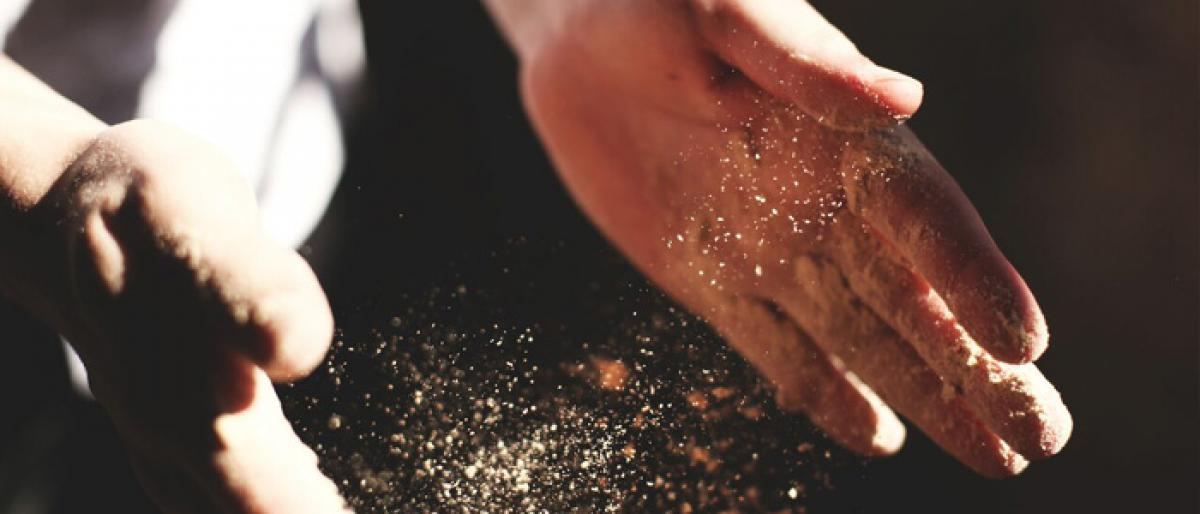Live
- Golden Chariot Luxury Train Revived
- Trying to deflect attention from AAP's failure: JD(U) leader on Kejriwal's letter to CM Nitish
- Advertising Club Hyderabad organises Seminar
- Rahul Gandhi more suitable to be a gym trainer: Acharya Pramod Krishnam
- PM Modi meets 101-year-old former IFS officer, gets a rousing welcome in Kuwait
- Mindful Goddesses: How Women’s Spiritual Development Is Strengthened by Meditation
- Apple CEO Tim Cook Explains Why AI Will Always Be Free for Users
- Venkatesh Daggubati Set to Make Talk Show Debut on Unstoppable with NBK Season 4
- Rashmika ends 2024 on a high
- Aishwarya Sharma pins hopes on ‘Drinker Sai’
Just In

Smart Dust is a name given to a collection of tiny computers, which are designed to feel, taste, smell, see, and hear what is going on around them. These dust size devices have extraordinary capabilities like sensing, computing, and communication. They can monitor various real-world phenomena without disturbing the original process.
Smart Dust is a name given to a collection of tiny computers, which are designed to feel, taste, smell, see, and hear what is going on around them. These dust size devices have extraordinary capabilities like sensing, computing, and communication. They can monitor various real-world phenomena without disturbing the original process.
In the nineties, Prof Kris Pister from the University of California, Berkeley, came up with this wild concept where one could sprinkle many dust-particle sized computing devices to monitor everything, acting like nerve endings of the planet. The idea was to equip them with computing power, sensors, radios and long battery life. Smart dust would then be able to make observations about people, cities, the environment and relay reams of real-time data. Having such information would help us in taking preventive action in the likelihood of an impending failure or disaster.
Decades after this, a variant of Pister's smart dust fantasy is finally coming to fruition, primarily due to an increased level of interest in the concepts of smart cities and IoT. The practical application of these needs a seamless way to deploy intelligent sensors. Smart dust technology has become a natural choice in that context. These sensors are leading to many uses of micro-applications in the human body to the macro-applications like surveillance of the planet's ecosystem.
Two major ‘smart dust’ projects, which are gaining traction across the world today, are ‘Planetary Skin’ and ‘Central Nervous System for the Earth (CeNSE)’.
Planetary Skin
Planetary Skin Institute is a non-profit organisation acting as a bridge between organisations like World Economic Forum, NASA, and the University of Minnesota. In 2009, it launched one of the most extensive smart dust network deployments ever. It takes information from space-to-mud-to-ocean sensors to be analyzed by experts and big data analytics to help emerging market countries with decisions about where to build infrastructure and where droughts or earthquakes can hit. In its latest project, they supported the government of Brazil build national monitoring and early warning system for natural disasters.
CeNSE
Central Nervous System for the Earth (CeNSE) is a project of Hewlett Packard Labs consisting of an intelligent network of billions of nanoscale sensors. This system gathers data and transmits it to powerful computing engines, which will analyse and act upon the information in real time. CeNSE is opening up numerous business optimisation applications using information ranging from operating capacity and merchandise tracking to environmental management and safety.
While the benefits of smart dust are plenty, it also has a few negative points to ponder over. One of the significant disadvantages is the privacy issue for organisations using it. Users will surely be concerned about their personal information being infringed upon.
Smart dust technology can benefit every industry. We can monitor a variety of things from crops in a field to the output of machines in a factory or animal migration patterns in a forest. One can dust a human body to keep track of the overall well-being of a person as well.
Talking about city infrastructure, in the future, every town and every corner will be alive with intelligence. Smart dust on the tracks can monitor delays in the trains. Pot-holes will be able to report themselves. And you will never have to listen to traffic reports on the radio. Bridges will get a coating of smart dust particles that can warn us about any stress fractures, thereby helping avoid deadly collapses. Your workplace will know as you enter through the door and will automatically boot up your computer.
Coming to human health and applications, US-based Berkeley Research Group (BRG) is working on the concept of sprinkling smart dust in our brain to monitor neurons and figure out new ways to treat and cure brain disorders. The improved understanding of how the brain works could lead to exciting medical discoveries that can improve the overall health of the humankind. All in all, the IoT and ubiquitous computing will get a serious shot in the arm as the Smart Dust technologies start to evolve to the next level.
By: Suresh Reddy
(The author is Chairman and Managing Director of Hyderabad-based Lycos Internet Ltd)

© 2024 Hyderabad Media House Limited/The Hans India. All rights reserved. Powered by hocalwire.com







